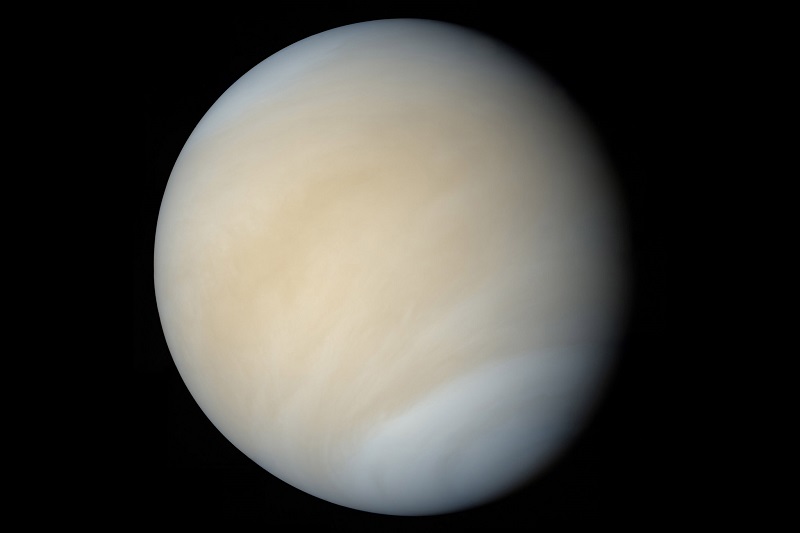Venus is often seen as Earth’s toxic twin. Why? Because it’s a little bit smaller than our planet but covered in an acid atmosphere hot enough to melt lead. A new study discovered another similarity between the two planets: Venus might still have active volcanos.
But this planet may resemble Earth more than we knew. It seems Venus might still shelter active volcanoes. This finding could help astronomers and planetary scientists discover if there can exist life on other worlds.
Researchers have always tried to find if Venus is volcanically active or not. At the beginning of the 90s, cloud-penetrating radar on the Magellan orbiter showed a surface studded with volcano-like mountains.
But no one could figure out if these features remained active. In 2010, data from Europe’s Venus Express spacecraft exposed several hot spots. They suggested lava had flowed approximately 250,000 years ago.
Spikes in sulfur dioxide within the Venusian atmosphere

Later, in 2012, the orbiter discovered spikes in sulfur dioxide within the Venusian atmosphere. For those who do not know what’s sulfur dioxide, it is a gas that smells like a struck match. And, the most important fact, active volcanoes produce it on Earth.
“The data that are currently available for Venus cannot unequivocally provide the smoking gun,” said Tracy Gregg. He is a famous geologist at the University of Buffalo. Justin Filiberto, a planetary scientist at the Lunar and Planetary Institute in Houston, decided to give it another try.
His team of scientists experimented with analyzed crystals of olivine, a green mineral commonly found in volcanic rock. They wanted to see how the mineral changes after it erupted into the Venusian atmosphere.
Furthermore, the team wanted to know how lava would interact with the dense Venusian air. It has a pressure of 90 atmospheres and is mostly composed of carbon dioxide.
The presence of minerals such as olivine
So the researchers demonstrated that the lava would be altered quickly in those conditions. Therefore, the presence of minerals such as olivine suggests that the deposits formed within the last years.
“Venus would make a great place to visit to better understand the interiors of planets,” Dr. Justin Filiberto said.
“For example, we could study how planets cool. Or why the Earth and Venus have active volcanism, but Mars does not. Future missions should be able to see these changes in the surface and provide concrete evidence of its activity.”
In their experiment, olivine becomes covered by iron oxide minerals such as magnetite and hematite in a matter of weeks. The study combined the team’s lab data with observations from the European probe Venus Express, which orbited the planet until 2014.
But one thing is for sure: confirming the discovery is not an easy task. Venus’ thick cloud cover doesn’t permit clear observations from orbit, so we can’t see when a volcano erupts.
Therefore, crafts must use infrared instruments to observe increases in temperature on the already-scorching Venusian surface. Although the Akatsuki spacecraft currently orbiting Venus had an instrument dedicated to that kind of observation, it no longer works.













































3 thoughts on “Venus Might Have Ongoing Volcanic Activity”
Thanks for a nice share you have given to us with such an large collection of information. Great work you have done by sharing them to all. Simply superb.
Hi there, all the time i used to check web site posts here early in the morning, because i like to
learn more and more.
I like the valuable info you provide in your articles. I’ll bookmark your blog and check again here
frequently. I am quite certain I’ll learn many new stuff right here!
Good luck for the next!